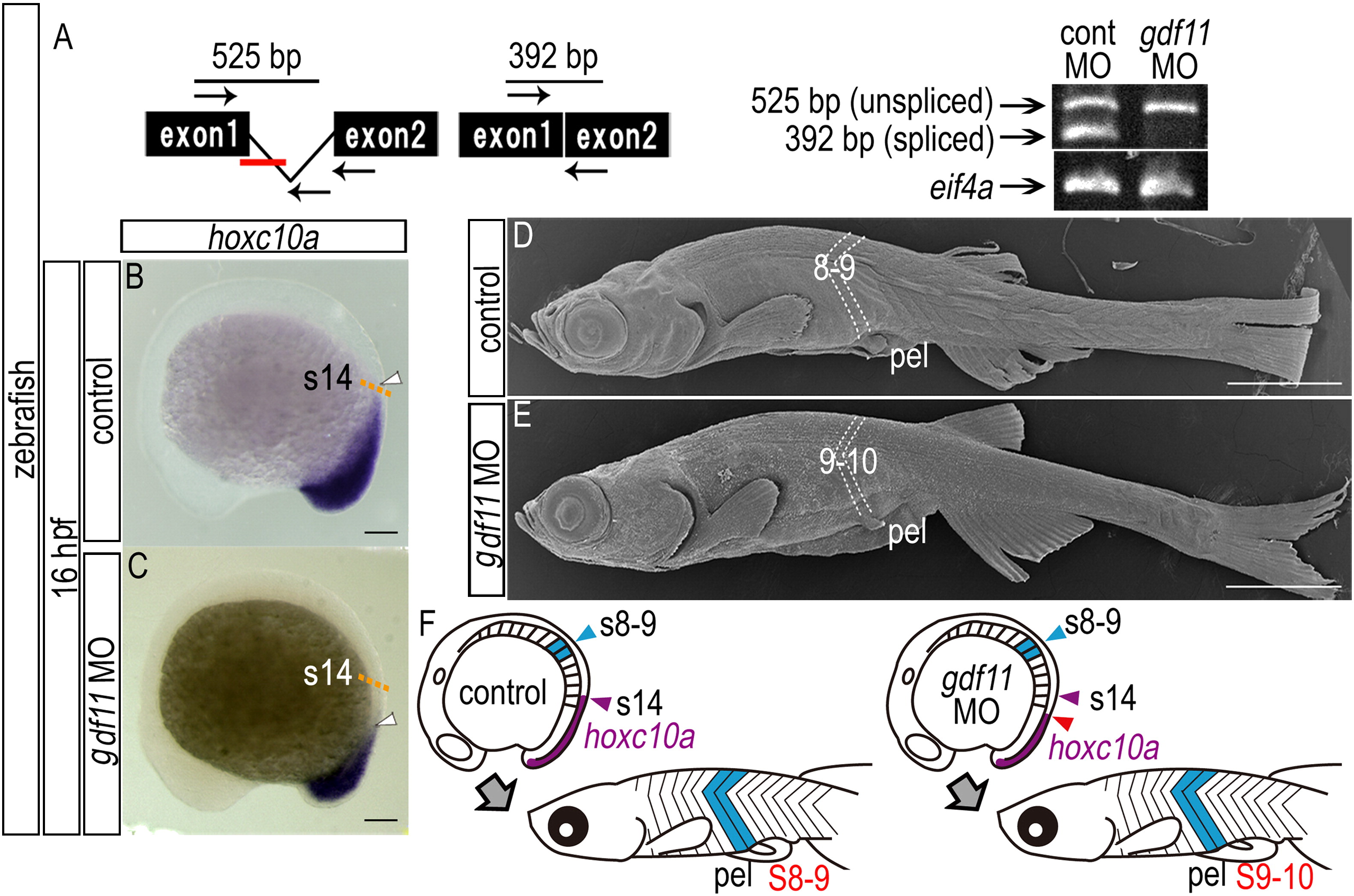Fig. 5 A common mechanism underlies the positioning of paired appendage via gdf11 expression levels in both teleosts and tetrapods. (A) RT-PCR analysis to determine the efficiency of the gdf11 splice-blocking morpholino (MO). In the schematic diagrams, arrows represent forward and reverse primers, and the short red bar represents the gdf11 MO. RT-PCR products were analyzed by agarose gel electrophoresis. Products of 392 bp and 525 bp represent spliced and unspliced gdf11 mRNA, respectively. Amplification of eif4a cDNA was used as a control. (B, C) Expression of hoxc10a in 16 hpf embryos injected with control MO (B) and gdf11 MO (C). The orange dashed line indicates the hoxc10a positive region of control morphant in (B). Caudal displacement of the anterior border of hoxc10a expression in the spinal cord (white arrowheads) is seen in the gdf11 morphant (C). (D, E) Scanning micrographs of zebrafish larvae. (D) Control (TL 10.5 mm). (E) gdf11 morphant (TL 10.1 mm). (F) Diagrams show the domains of hoxc10a expression in the spinal cord (purple) of control and gdf11 morphants. The anterior border of hoxc10a expression in the spinal cord of the control (opposite somite 14) and of gdf11 morphants are indicated by purple and red arrowheads, respectively. Pelvic fins of control larvae appear opposite the 8th-9th segments (blue). pel, pelvic fin. Scale bars: 100 μm for panels (B) and (C); 1 mm for panels (D) and (E).
Reprinted from Developmental Biology, 347(1), Murata, Y., Tamura, M., Aita, Y., Fujimura, K., Murakami, Y., Okabe, M., Okada, N., and Tanaka, M., Allometric growth of the trunk leads to the rostral shift of the pelvic fin in teleost fishes, 236-245, Copyright (2010) with permission from Elsevier. Full text @ Dev. Biol.

